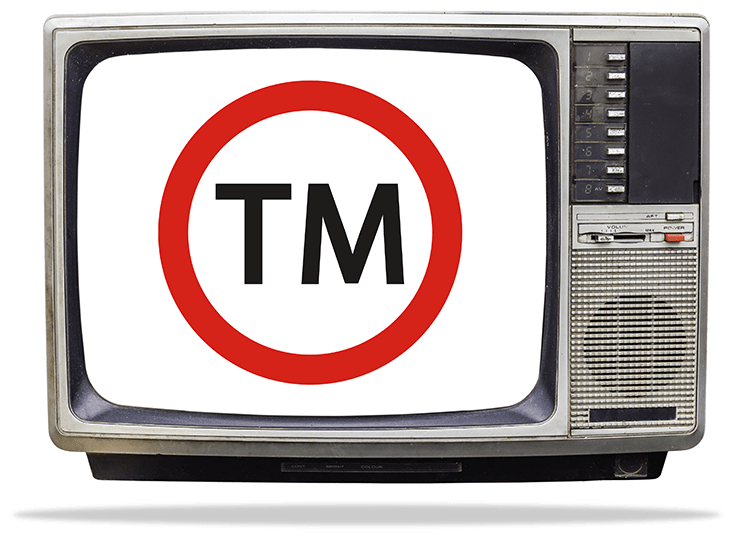It has now been a number of months since the transition period ended and the United Kingdom left the European Union. We revisit the subject of intellectual property (IP) and the impact this new dawn has had on your intellectual property rights.
Blake Morgan e-Magazine | Spring 2021 | Issue 4


by Ben Evans

The UK is a member of a number of international treaties, and agreements, protecting copyright.
These were largely unaffected by the UK’s exit from the EU with the majority of UK copyright works still being protected around the world, including in the EU, and works originating in the EU (but not from the UK) still protected in the UK.
Where we have seen changes is in respect of certain cross-border copyright mechanisms which no longer apply in the same way as they were originally intended. For example the EU Portability Regulation which allowed consumers to access online content services (for example Netflix) when they were travelling have ceased to apply and thus UK consumers travelling to the EU may find they can no longer access such services whilst abroad.
UK consumers travelling to the EU may find they can no longer access such services whilst abroad.
Whilst UK registered and unregistered designs remain unchanged the same cannot be said for Registered Community Designs (RCD) and Unregistered Community Designs (UCD).
The owners of RCD’s were automatically granted equivalent UK rights at no cost. The RCD itself continues to protect the owner in the remaining 27 Member States of the EU. The RCD, and equivalent UK right, are now treated entirely separately for the purposes of renewal, validity etc.
Businesses that had pending RCD applications at the end of the Transition Period have nine months from the end of the Transition Period to file an equivalent UK application based on the RCD and in accordance with the UK’s standard fee structure.
UCD’s provide businesses with automatic protection for certain designs (including the likes of clothing designs and patterns). Following Britain's exit from the EU businesses are no longer afforded UCD’s for new designs and, instead, need to fall back on UK unregistered designs. However, UK unregistered designs are not the same as UCD’s. Accordingly the UK Government have confirmed that, where certain types of rights are not permitted to be protected as UK unregistered designs under existing legislation, then new schemes will be established to ensure that UCD’s are protected in the UK.
The RCD, and resulting equivalent UK right, will now be treated entirely separately for the purposes of renewal, validity etc.


Patents have largely been unaffected by Brexit.
The European Patent Convention is not related to the EU, European patents continue to cover the EU and European patent attorneys based in the UK continue to be able to represent applicants before the EPO.
Perhaps the most significant impact on IP is in respect of trade marks. At the end of the Transition Period, owners of existing registered, EU trade marks (EUTMs) were granted a new equivalent UK right. It was an automatic process, but rights holders had the option to opt-out if for any reason they did not want a UK registration.
The resulting UK registrations are subject to renewal in the UK, can form the basis for proceedings in the UK, can be challenged for invalidity/non-use in the UK and can be assigned and licensed independent from the EUTM from which it originated.
However, applicants of EUTM applications that were pending at the end of the Transition Period were not automatically granted an equivalent UK application and, instead, the applicants have a period of nine months from the end of the Transition Period to file an equivalent UK application which will benefit from the same filing/priority/seniority date as the EUTM from which it originated. Importantly however the holder will need to pay for this new UK application.
International Registrations (“IR”), designating the EU, were essentially dealt with in the same way as EUTMs i.e. owners of such IR’s have automatically been granted an equivalent UK right or, if the application was pending, the applicant has a nine month period within which to file an equivalent UK application.
Perhaps the biggest impact will have been felt by the holders of EUTM applications that were pending at the end of the Transition Period.


Before Brexit, the owners of EU intellectual property rights (for example EU trade marks, Registered Community Designs and/or copyright) could seek to enforce their rights by bringing proceedings in one Member State but obtain pan-EU relief.
So, for example, the owner of an EU trade mark could bring infringement proceedings in a UK court seeking an injunction preventing the defendant from using an infringing mark anywhere in the EU.
Following the UK's exit from the EU, UK courts no longer have jurisdiction over infringements occurring outside of the UK and thus are not able to grant relief in respect of infringements outside of the UK. Equally, owners of both EU and UK intellectual property rights need to bring separate proceedings in both the UK and an EU Member State if they seek relief across the EU and in the UK.
Indeed, a recent High Court decision raised question marks over whether a UK court, hearing an infringement claim where the infringing activity, and proceedings, started prior to the end of the transition period, could grant injunctive relief outside of the UK. Ultimately the judge didn't need to consider the issue further as infringement wasn't found but it highlights a risk for parties already involved in litigation.
Even having obtained judgment, there is still the issue of enforcing that judgment. At the time of writing, it is still very much a live issue with the EC recently advising the EU to refuse the UK's request to join the Lugano Convention, which the UK was formerly part of through its EU membership. Certainly something to keep an eye on.
- If you had EUTMs or RCDs that were still pending at the end of the Transition Period and you would like them to be protected in the UK also then you have until 30 September 2021 to apply for them, preserving the original filing date;
- If filing new trade mark or design applications now then you will need to consider whether you need protection in the UK as well as the EU;
- If you have licences/security interests recorded against an EUTM or RCD then consider whether you should record comparable interests against the new UK mark/design;
- Review any co-existence, distribution, licence, or similar, agreements to consider whether those agreements that define the EU as the territory need to be clarified to ensure that they have continued to apply to the UK after Brexit;
- Review any co-existence, settlement, or similar, agreements to ensure that the automatic granting of any comparable UK mark has not put you in breach of contract; and
- If you are the owner of a UK intellectual property registration and do not currently have a representative based in the UK, consider appointing an additional or alternative represent to represent you directly before the UK IPO.
In light of the changes that have come into place since the UK left the EU, we would suggest that you consider the following:

Now the UK has left the EU, UK based representatives are no longer able to directly represent clients before the EUIPO. This means that they are no longer able to file, or renew, EU trade marks or RCDs.
However, Blake Morgan can continue to advise clients in respect of the entirety of their portfolios and have a solution in place whereby we work with our trusted agents within the EU to deal with the filings and formal representation requirements thus ensuring consistency and continuity for you.
Similarly, all new applications or requests to start contentious proceedings before the UK IPO will now only be accepted if they have an address for service in the UK or Channel Islands. This is a change to the pre-Brexit requirements that allowed an address for service in the EEA. This change applies to all registered intellectual property rights, meaning that patents, trade marks and registered designs have all been affected. The change in address for service requirements means that a number of intellectual property rights holders may now need to find an additional or alternative representative to represent them directly before the UK IPO. However, the Government has confirmed that a UK address for service is not required for the renewal of registered or granted rights.
All new applications or requests to start contentious proceedings before the UK IPO will now only be accepted if they have an address for service in the UK or Channel Islands.
If you only have a UK mark but use the mark in the other 27 Member States then consider filing an application for an EUTM.



It has now been a number of months since the transition period ended and the United Kingdom left the European Union. We revisit the subject of intellectual property (IP) and the impact this new dawn has had on your intellectual property rights.
by Ben Evans
The UK is a member of a number of international treaties, and agreements, protecting copyright.

These were largely unaffected by the UK’s exit from the EU with the majority of UK copyright works still being protected around the world, including in the EU, and works originating in the EU (but not from the UK) still protected in the UK.
Where we have seen changes is in respect of certain cross-border copyright mechanisms which no longer apply in the same way as they were originally intended. For example the EU Portability Regulation which allowed consumers to access online content services (for example Netflix) when they were travelling have ceased to apply and thus UK consumers travelling to the EU may find they can no longer access such services whilst abroad.
Whilst UK registered and unregistered designs remain unchanged the same cannot be said for Registered Community Designs (RCD) and Unregistered Community Designs (UCD).

The owners of RCD’s were automatically granted equivalent UK rights at no cost. The RCD itself continues to protect the owner in the remaining 27 Member States of the EU. The RCD, and equivalent UK right, are now treated entirely separately for the purposes of renewal, validity etc.
Businesses that had pending RCD applications at the end of the Transition Period have nine months from the end of the Transition Period to file an equivalent UK application based on the RCD and in accordance with the UK’s standard fee structure.
UCD’s provide businesses with automatic protection for certain designs (including the likes of clothing designs and patterns). Following Britain's exit from the EU businesses are no longer afforded UCD’s for new designs and, instead, need to fall back on UK unregistered designs. However, UK unregistered designs are not the same as UCD’s. Accordingly the UK Government have confirmed that, where certain types of rights are not permitted to be protected as UK unregistered designs under existing legislation, then new schemes will be established to ensure that UCD’s are protected in the UK.
Patents have largely been unaffected by Brexit.

The European Patent Convention is not related to the EU, European patents continue to cover the EU and European patent attorneys based in the UK continue to be able to represent applicants before the EPO.
Perhaps the most significant impact on IP is in respect of trade marks. At the end of the Transition Period, owners of existing registered, EU trade marks (EUTMs) were granted a new equivalent UK right. It was an automatic process, but rights holders had the option to opt-out if for any reason they did not want a UK registration.

The resulting UK registrations are subject to renewal in the UK, can form the basis for proceedings in the UK, can be challenged for invalidity/non-use in the UK and can be assigned and licensed independent from the EUTM from which it originated.
However, applicants of EUTM applications that were pending at the end of the Transition Period were not automatically granted an equivalent UK application and, instead, the applicants have a period of nine months from the end of the Transition Period to file an equivalent UK application which will benefit from the same filing/priority/seniority date as the EUTM from which it originated. Importantly however the holder will need to pay for this new UK application.
International Registrations (“IR”), designating the EU, were essentially dealt with in the same way as EUTMs i.e. owners of such IR’s have automatically been granted an equivalent UK right or, if the application was pending, the applicant has a nine month period within which to file an equivalent UK application.
Before Brexit, the owners of EU intellectual property rights (for example EU trade marks, Registered Community Designs and/or copyright) could seek to enforce their rights by bringing proceedings in one Member State but obtain pan-EU relief.

So, for example, the owner of an EU trade mark could bring infringement proceedings in a UK court seeking an injunction preventing the defendant from using an infringing mark anywhere in the EU.
Following the UK's exit from the EU, UK courts no longer have jurisdiction over infringements occurring outside of the UK and thus are not able to grant relief in respect of infringements outside of the UK. Equally, owners of both EU and UK intellectual property rights need to bring separate proceedings in both the UK and an EU Member State if they seek relief across the EU and in the UK.
Indeed, a recent High Court decision raised question marks over whether a UK court, hearing an infringement claim where the infringing activity, and proceedings, started prior to the end of the transition period, could grant injunctive relief outside of the UK. Ultimately the judge didn't need to consider the issue further as infringement wasn't found but it highlights a risk for parties already involved in litigation.
Even having obtained judgment, there is still the issue of enforcing that judgment. At the time of writing, it is still very much a live issue with the EC recently advising the EU to refuse the UK's request to join the Lugano Convention, which the UK was formerly part of through its EU membership. Certainly something to keep an eye on.
Now the UK has left the EU, UK based representatives are no longer able to directly represent clients before the EUIPO. This means that they are no longer able to file, or renew, EU trade marks or RCDs.

However, Blake Morgan can continue to advise clients in respect of the entirety of their portfolios and have a solution in place whereby we work with our trusted agents within the EU to deal with the filings and formal representation requirements thus ensuring consistency and continuity for you.
Similarly, all new applications or requests to start contentious proceedings before the UK IPO will now only be accepted if they have an address for service in the UK or Channel Islands. This is a change to the pre-Brexit requirements that allowed an address for service in the EEA. This change applies to all registered intellectual property rights, meaning that patents, trade marks and registered designs have all been affected. The change in address for service requirements means that a number of intellectual property rights holders may now need to find an additional or alternative representative to represent them directly before the UK IPO. However, the Government has confirmed that a UK address for service is not required for the renewal of registered or granted rights.
In light of the changes that have come into place since the UK left the EU, we would suggest that you consider the following:

- If you had EUTMs or RCDs that were still pending at the end of the Transition Period and you would like them to be protected in the UK also then you have until 30 September 2021 to apply for them, preserving the original filing date;
- If filing new trade mark or design applications now then you will need to consider whether you need protection in the UK as well as the EU;
- If you have licences/security interests recorded against an EUTM or RCD then consider whether you should record comparable interests against the new UK mark/design;
- Review any co-existence, distribution, licence, or similar, agreements to consider whether those agreements that define the EU as the territory need to be clarified to ensure that they have continued to apply to the UK after Brexit;
- Review any co-existence, settlement, or similar, agreements to ensure that the automatic granting of any comparable UK mark has not put you in breach of contract; and
- If you are the owner of a UK intellectual property registration and do not currently have a representative based in the UK, consider appointing an additional or alternative represent to represent you directly before the UK IPO.
